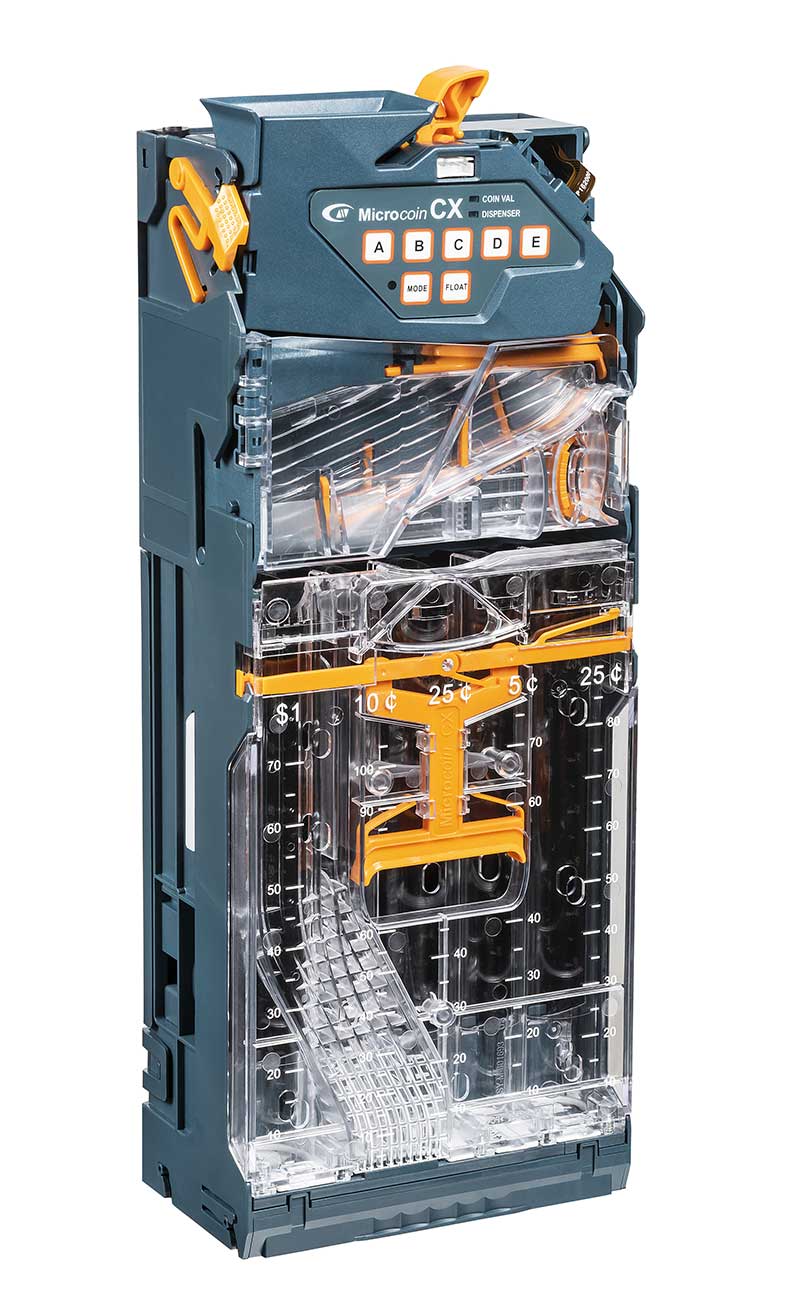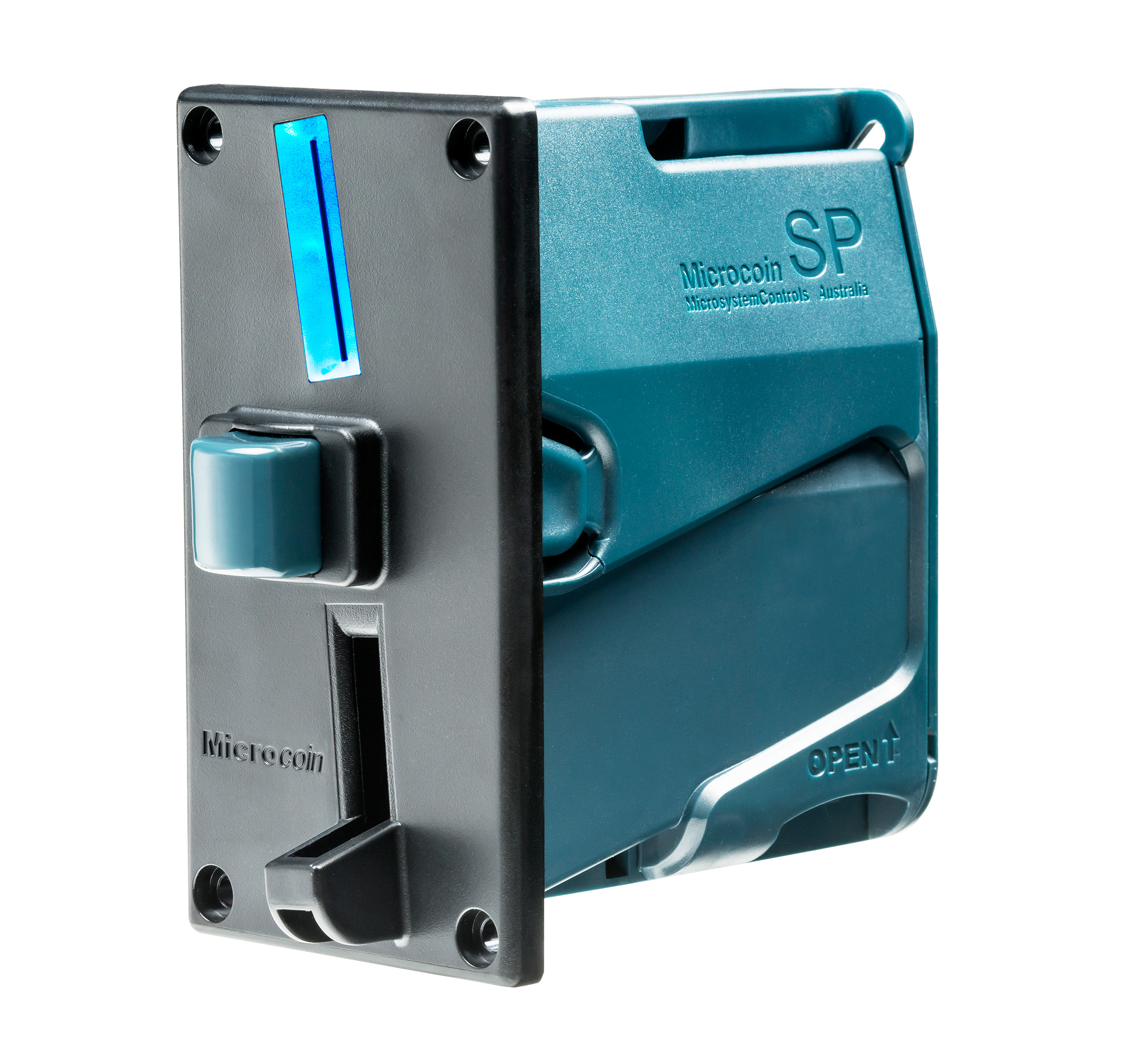Vending applications are wide & varied and broadly speaking, they cover the exchange of a good or service in return for cash. Nowadays, cash can mean coins, notes or debit cards. Typically, vending falls into two main categories.
a. Change-giving
b. Non change-giving
Change-giving applications include drink and confectionery dispensing, where coins are inserted and change is given.
Non change-giving applications include car park ticketing, Internet kiosks, phone card dispensing, coffee vending, laundrettes where coins are inserted but change is not offered.
The Microcoin validator is designed to support non change-giving applications.
It can be set up in a front-entry mode, where coins are inserted through a Microcoin faceplate, or can be placed in any generic bracket of the client’s choice.
The validator’s function is to signal to the host machine, (a) which coins have been inserted and/or (b) the accumulation of the coin values to a pre-programmed vend amount.
Microcoin can advise on coin handling and process control solutions to customers who are designing non-change giving applications from the ground up.
Alternatively, the Microcoin CX coin changer provides a powerful solution to vending machines which require to provide change. The Microcoin CX operates with MDB protocol so that it can connect to the host machine’s Vending Machine Controller, or VMC which controls inputs and outputs to the machine, including :
- Product available– checks that there is product available to be dispensed
- Product unavailable– vend selection is disallowed, money is not debited
- Product dispensed– checks that the vended item has actually been dispensed
- External credit input, i.e. Bank note reader– provides additional credit input
- Individual product selections
- Money display– indicates money received






